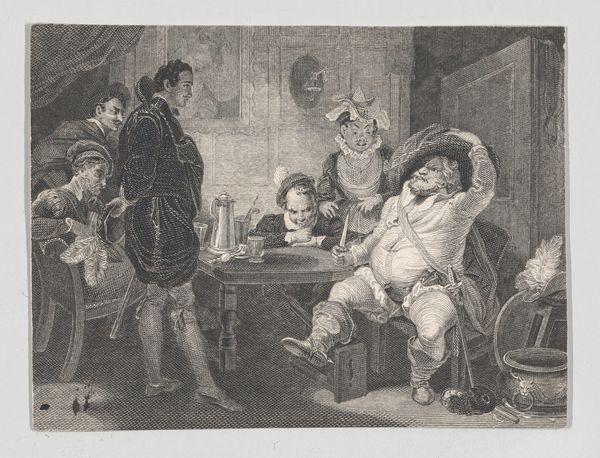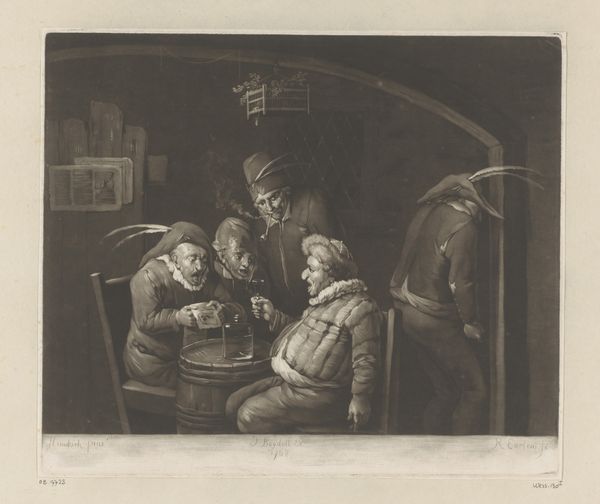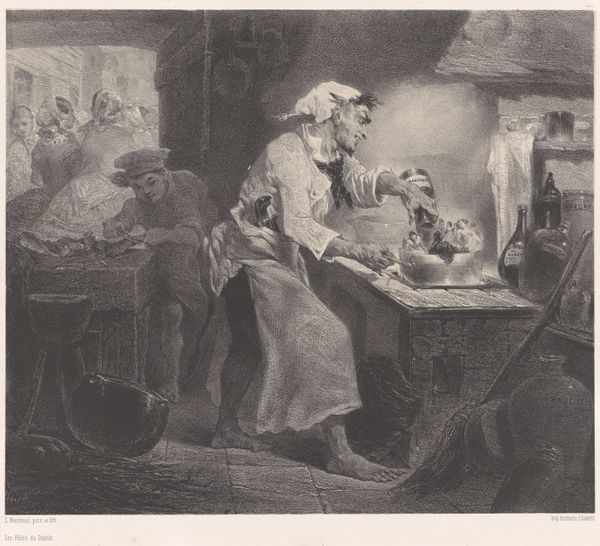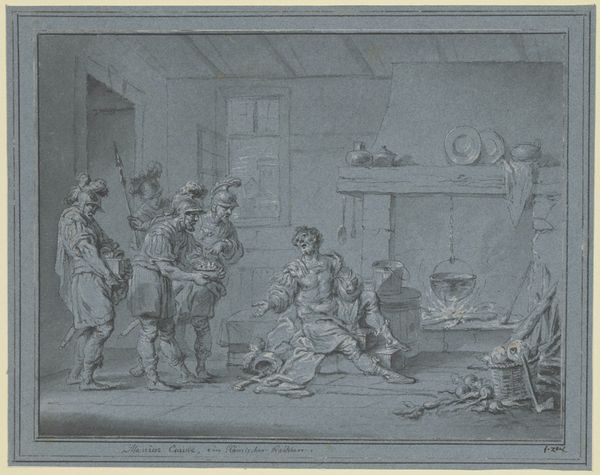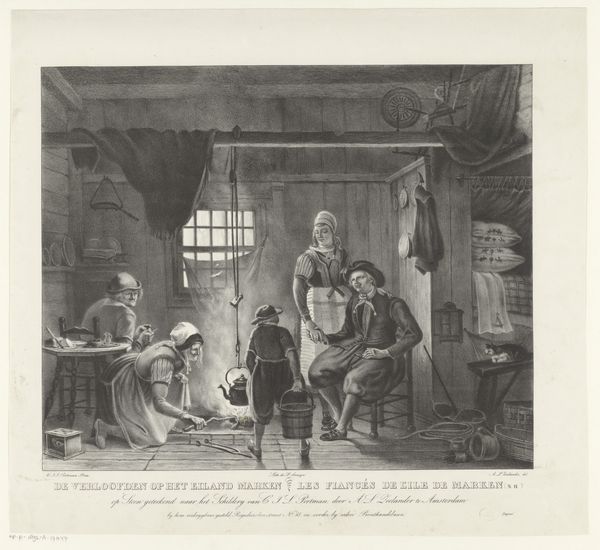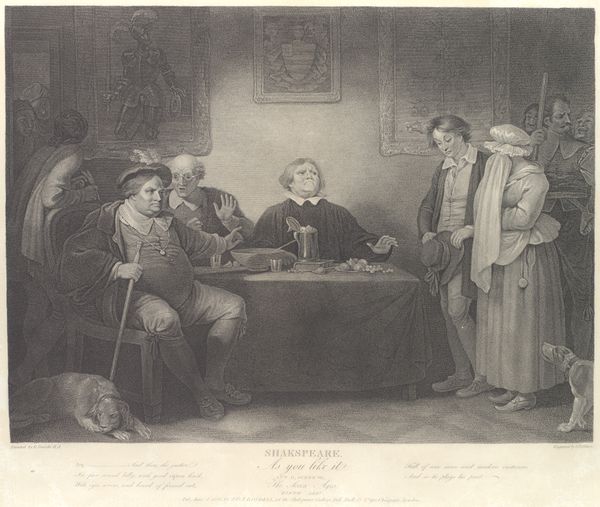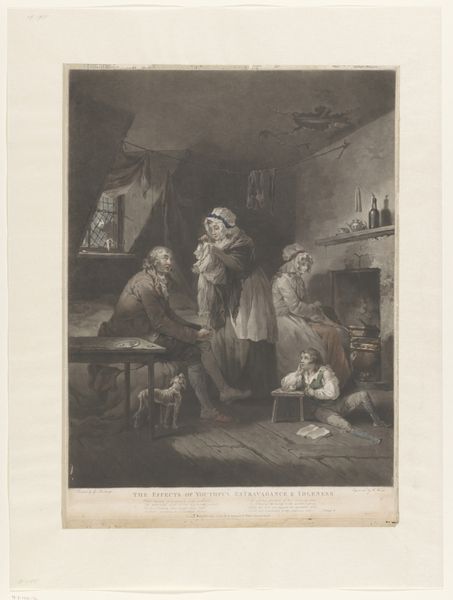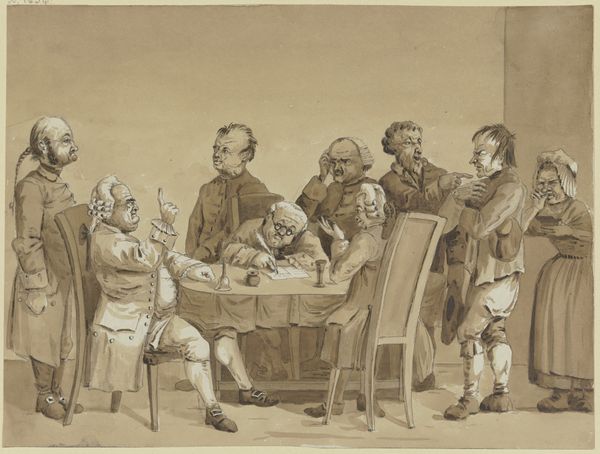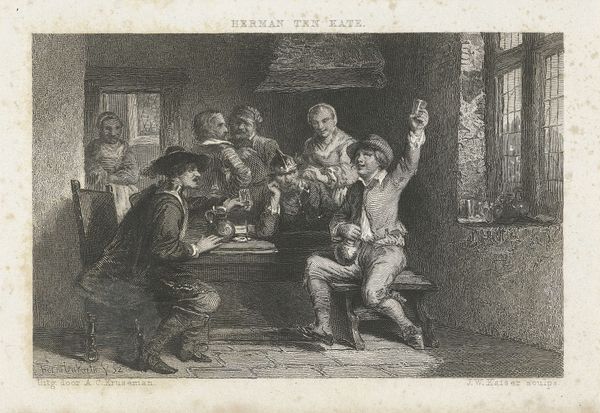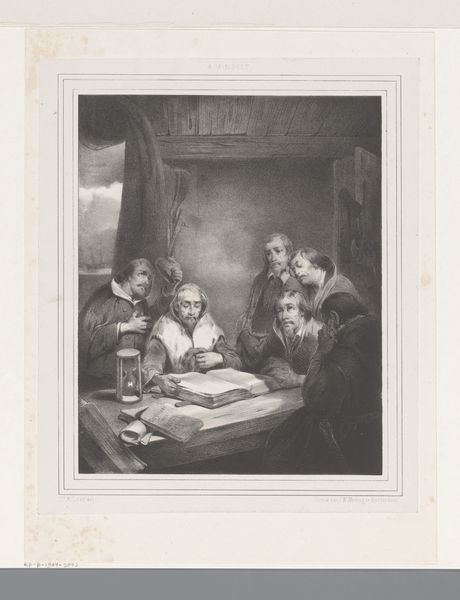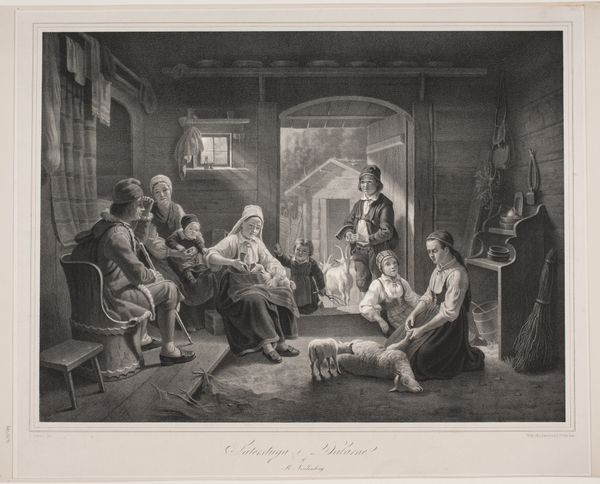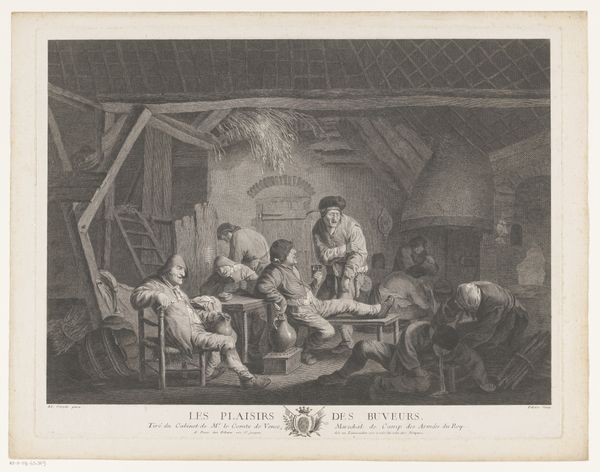
Falstaff, Prince Henry and Poins at the Boar's Head Tavern (Shakespeare, King Henry the Fourth, Part 1, Act 2, Scene 4) 1796
0:00
0:00
drawing, print, engraving
#
drawing
#
narrative-art
# print
#
figuration
#
group-portraits
#
19th century
#
line
#
history-painting
#
academic-art
#
engraving
Dimensions: Plate: 19 11/16 × 25 3/16 in. (50 × 64 cm)
Copyright: Public Domain
Curator: Here we have Robert Thew’s engraving from 1796, a depiction of Falstaff, Prince Henry, and Poins at the Boar's Head Tavern, taken from Shakespeare's Henry IV, Part 1. It's currently housed at the Metropolitan Museum of Art. What strikes you initially? Editor: The immediate impression is one of jovial chaos! A stout Falstaff dominates the scene, his posture radiating a sort of unkempt authority amidst the revelry. I'm also curious about that small monkey. Curator: Excellent point. It’s quite fascinating how Thew visualizes this iconic scene. The composition places Falstaff centrally, signifying his pivotal role within this bawdy atmosphere, reflecting his popularity and his relationship to royalty. The figures are carefully arranged to convey Shakespeare's themes of debauchery and the corruption within Prince Henry's circle, but there is also humanity, the characters are far from archetypes of evil. Editor: Yes, and considering Falstaff’s physical form as central too, the figure can also be considered to carry multiple meanings throughout history, like an amalgamation of aspects, appetites, even a carnivalesque king figure. One can look at his attire and pose, alongside those objects on the lower-right corner, and infer how class status is communicated with potent symbolism. Thew captures the scene with rich layers of meaning! Curator: Absolutely. This interpretation allows for multiple viewpoints. What about the almost theatrical lighting in Thew's composition? How does that fit? Editor: That stark contrast guides the viewer's eye, doesn't it? It illuminates not only Falstaff but also reveals the darker corners of their behavior, which is almost like stage lighting. I sense it points towards moral ambiguity and dramatic tension brewing beneath the surface fun and games of this royal den of sorts. Curator: I concur, I also wonder if the relatively restrained lines of the engraving serve as a means of filtering or elevating the less savory aspects of the subject matter for an 18th-century audience accustomed to decorum and classicism. Editor: Indeed, almost like a veil of respectability. Ultimately, Thew uses popular iconography to portray a moment that’s both comic and charged. The layers and references make it an enriching work. Curator: It makes us reflect upon the play's commentary on power and corruption within English society, seen through the lens of Thew's interpretation, which maintains some distance between the viewer and the scene.
Comments
No comments
Be the first to comment and join the conversation on the ultimate creative platform.
